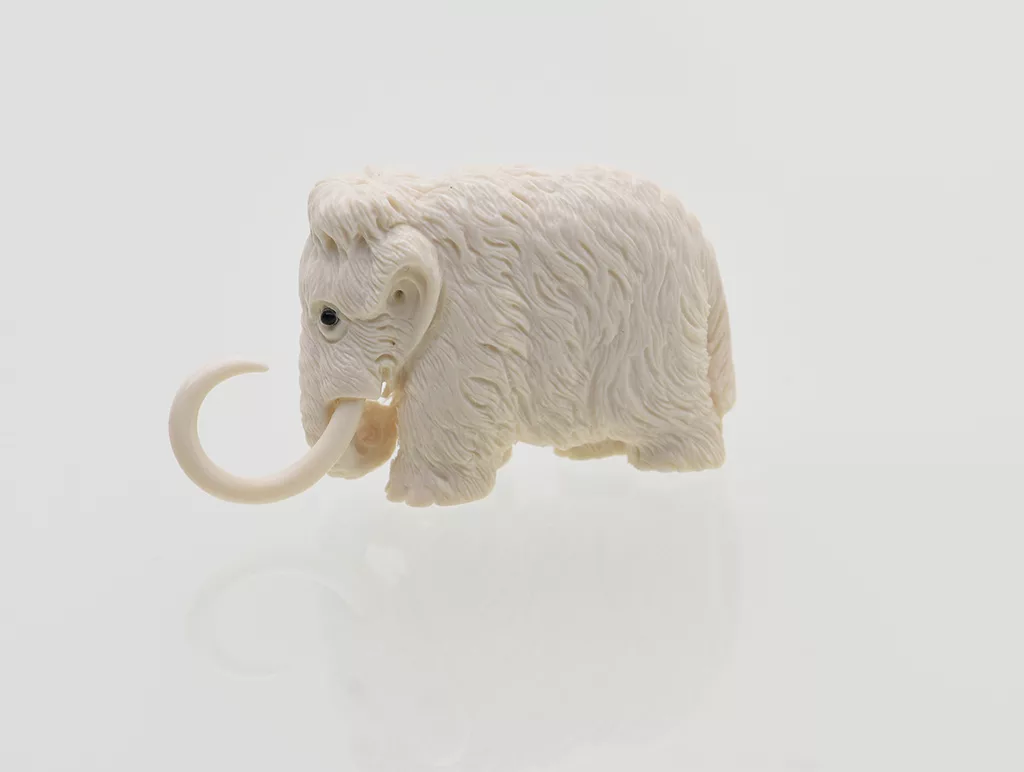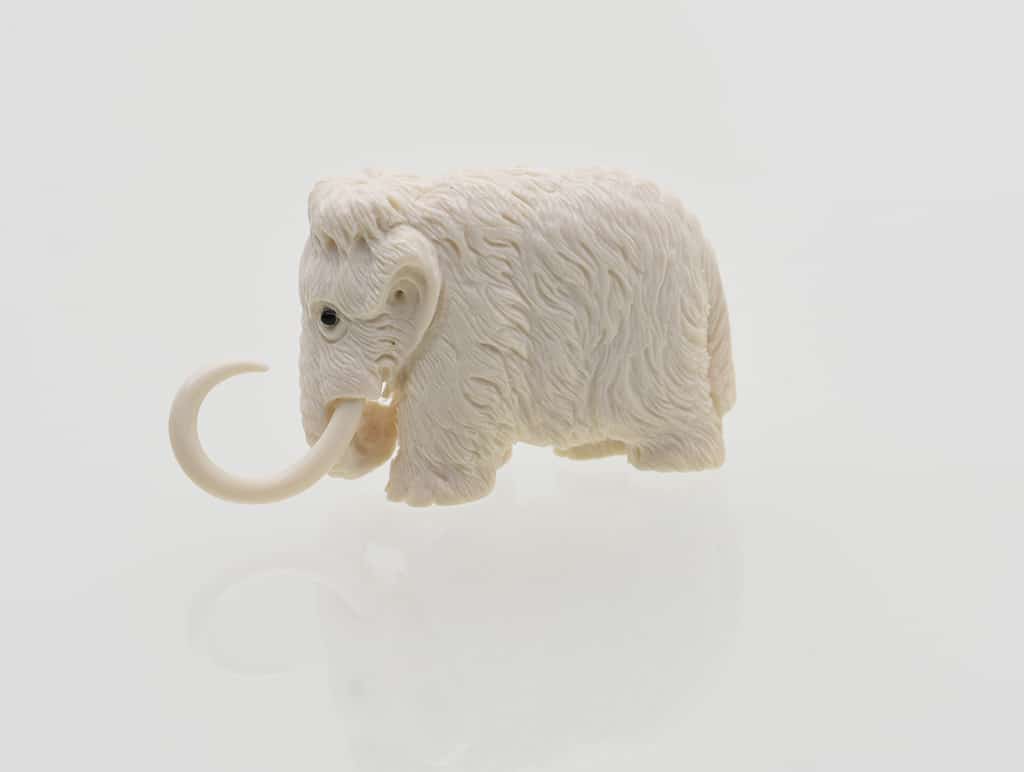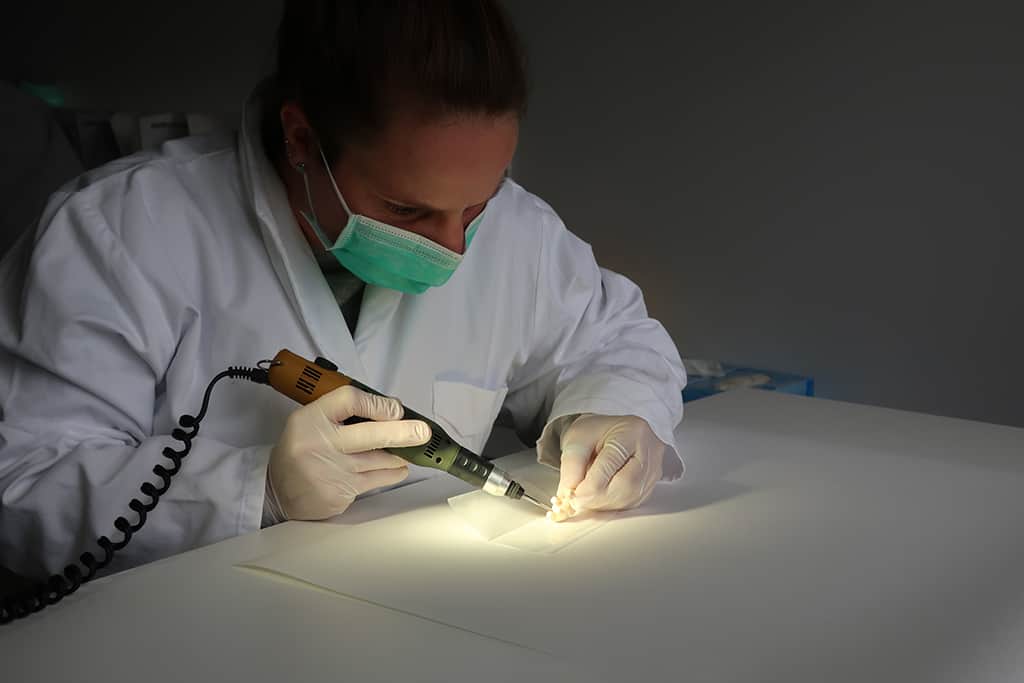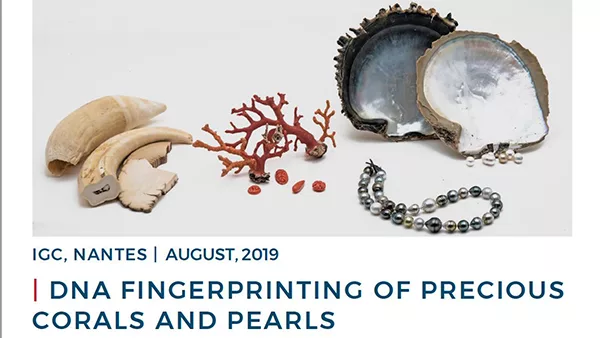
Genetic identification of ivory species: research and testing

by L. E. Cartier, first published in Facette 26 (May 2020)
In 2019, SSEF became the first gem laboratory worldwide to introduce DNA fingerprinting of ivory as a standard client service. This work is done in collaboration with the Institute of Forensic Medicine at the University of Zurich, one of Switzerland’s leading forensic institutes. DNA fingerprinting of ivory involves a scientific method that can provide valuable information about the species of ivory being used in jewellery and ornamental objects, in order to determine whether it is CITES- listed elephant ivory or non-listed mammoth ivory. DNA fingerprinting, together with a morphological analysis of an ivory sample, helps ascertain whether an item of ivory originated from a historic or modern source. This is particularly helpful in identifying cases of fraud where, for example, CITES-regulated elephant ivory is misrepresented and sold as mammoth ivory. To conclusively identify the species of ivory using commonly available gemmological lab techniques can be challenging, especially if Schreger lines are not evidently visible.
Elephant ivory from African (Loxodonta spp.) and Asian (Elephas spp.) elephant tusks is comprised of collagen and carbonate-rich hydroxyapatite (dahllite, Ca10[PO4]6[CO3] • H2O). Ivory can be found in a large number of animal species, of which elephant ivory is the most studied due to its value, recognition and cultural importance. In recent years, mammoth ivory has appeared more widely on the market, as elephant ivory trade restrictions have taken force (e.g. under the Convention on International Trade in Endangered Species of Wild Fauna and Flora, or CITES; www.cites.org/eng/niaps). CITES regulates the trade in biogenic gem materials that are produced by species included in its Appendices I, II or III.
The need to conclusively identify the source and species of samples of ivory in the trade has become more urgent following discussions in August 2019 by the Convention on International Trade in Endangered Species (CITES) on the possible inclusion of mammoth ivory in the CITES appendices. Mammoth ivory is used in carvings and jewellery, and is mainly sourced from the remains of mammoths preserved in the permafrost of current-day Siberia. The mammoths, which were common to the region, became extinct about 10,000 years ago.

With ivory, origin determination based on DNA analysis has already been proven possible (Wasser et al., 2004). However, the available methodology requires large amounts of sample material and is thus not appropriate for jewellery or other items that cannot be destructively tested. The method used by SSEF requires much less material (ca. 100 mg) for testing of such samples.
The ability to trace ivory back to its species-related and geographic origins can provide greater transparency and help curb trade in illegal materials (and thus restrict poaching and smuggling). It will also help in the documentation of historic samples.
For more information about this service see here.


